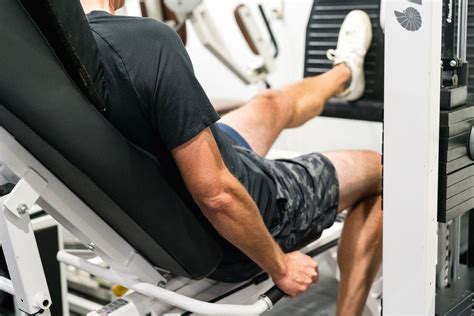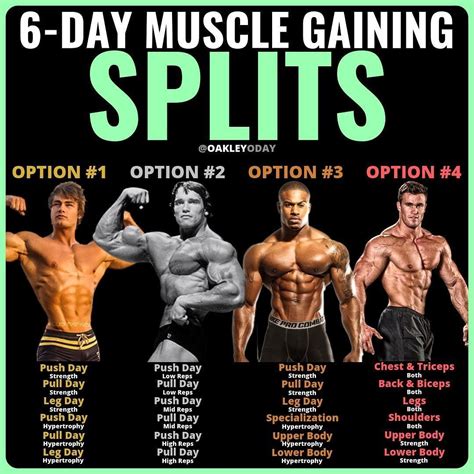Beyond the basics: what advanced training principles drive peak strength & muscle gains?

Transitioning from Intermediate to Advanced Training
For many lifters, the initial gains from basic progressive overload eventually slow down. The body adapts, and what once worked effectively may no longer stimulate significant strength or muscle growth. To break through plateaus and achieve truly elite levels of physical development, a more sophisticated approach to training is required. This involves delving into advanced principles that manipulate various training variables with greater precision and purpose. It’s about moving beyond simply adding weight to the bar and understanding the complex interplay of volume, intensity, frequency, and recovery.
This article will explore the core advanced training principles that differentiate peak performers from the perpetually plateaued, guiding you towards a more effective and intelligent training methodology.

The Evolving Face of Progressive Overload
While progressive overload remains the bedrock of all effective training, its application becomes more nuanced at an advanced level. It’s no longer just about linear progression (adding weight every session). Advanced lifters employ diverse forms of overload:
- Double Progression: Increasing reps within a range before increasing weight, then repeating.
- Smallest Usable Increments: Utilizing micro-plates to add minuscule amounts of weight, especially for lifts like overhead press.
- Increased Density: Performing more work in less time (e.g., reducing rest periods while maintaining reps/weight).
- Enhanced Time Under Tension: Slowing down eccentric phases, adding pauses, or utilizing constant tension methods.
- Improved Form/Efficiency: While not a direct overload, mastering technique allows for handling more weight safely and effectively.
- Increased Frequency: Training a muscle group more often, allowing for more total practice and stimulus over time.
Understanding these varied applications is crucial for continuous progress when linear gains are no longer possible.
The Power of Periodization
Periodization is perhaps the most critical advanced principle. It involves strategically planning your training over cycles (microcycles, mesocycles, macrocycles) to manage fatigue, optimize adaptation, and peak for specific goals. Instead of constantly pushing for maximal effort, periodization cycles through different phases:
- Accumulation Phases: Focus on higher volume, moderate intensity, building work capacity and hypertrophy.
- Intensification Phases: Shift to lower volume, higher intensity, emphasizing strength and neural adaptations.
- Deload Phases: Planned reductions in volume and/or intensity to allow for recovery, supercompensation, and injury prevention.
Common periodization models include linear (gradual shift from high volume to high intensity), undulating (daily or weekly variations in volume/intensity), and block periodization (distinct blocks of accumulation, intensification, and realization). Choosing the right model depends on your goals and response to training.

Mastering Advanced Intensity Techniques
Once a solid foundation is built, advanced intensity techniques can be strategically employed to push muscles beyond their typical failure point, stimulating new growth pathways. These are powerful tools and should be used sparingly to avoid overtraining:
- Drop Sets: Performing an exercise to failure, then immediately dropping the weight and continuing to failure.
- Supersets/Giant Sets: Performing two or more exercises back-to-back with minimal rest.
- Rest-Pause Training: Reaching failure, taking a short 10-20 second rest, then performing more reps with the same weight.
- Forced Reps: Having a spotter assist you to complete a few extra reps past failure.
- Negatives (Eccentric Overload): Focusing on the lowering (eccentric) phase of a lift, often with a heavier weight than you can lift concentrically.
- Partial Reps/Holds: Performing reps over a limited range of motion where the muscle is strongest, or holding weights isometrically.
These techniques drastically increase training stress and metabolic fatigue, making them excellent for breaking plateaus but demanding careful integration into a well-structured program.

Strategic Volume, Frequency, and Recovery
Optimizing volume (total sets x reps x weight), frequency (how often a muscle is trained), and recovery are critical for advanced gains. What constitutes optimal for one individual might be overtraining for another. Advanced principles here include:
- Minimum Effective Volume (MEV) to Maximum Adaptable Volume (MAV): Understanding the range where you get the most benefit without overtraining. This range fluctuates with experience and training phase.
- Higher Frequency Training: Splitting total weekly volume across more frequent, lower-volume sessions for increased protein synthesis and skill practice (e.g., training muscles 2-3+ times a week).
- Deloads and Strategic Rest: Regularly integrating planned deload weeks or even longer complete breaks to manage accumulated fatigue and allow the body to supercompensate.
- Active Recovery: Light activities (e.g., walking, stretching, foam rolling) that promote blood flow and aid recovery without adding significant stress.
At advanced levels, recovery isn’t just about rest; it encompasses nutrition, sleep quality, stress management, and active recovery protocols.

Individualization and Auto-Regulation
Perhaps the most advanced principle is the ability to individualize and auto-regulate your training. No two lifters are identical in their response to training, recovery capacity, or daily readiness. Auto-regulation means adjusting your training based on how you feel on a given day:
- RPE (Rate of Perceived Exertion) / RIR (Reps in Reserve): Using scales to gauge effort and adjust sets/reps/weight accordingly. If a set feels harder than usual, you might back off slightly.
- Monitoring Fatigue Markers: Paying attention to sleep quality, mood, energy levels, and persistent muscle soreness to inform training adjustments.
- Flexibility in Programming: Having a general plan but being prepared to modify it based on daily readiness, stress levels, or life circumstances.
This level of self-awareness and responsiveness ensures that you are always training optimally, neither under-training nor over-training, thereby maximizing long-term progress.

Conclusion: The Art of Advanced Training
Moving beyond the basics of training requires a deeper understanding and application of these advanced principles. It’s not about making training harder; it’s about making it smarter and more effective. By strategically manipulating progressive overload, implementing periodization, utilizing intensity techniques, optimizing volume and frequency, and listening to your body through individualization and auto-regulation, you can unlock new levels of strength and muscle mass. This journey from intermediate to advanced is a continuous learning process, demanding patience, discipline, and a willingness to adapt your approach to achieve your peak physical potential.






